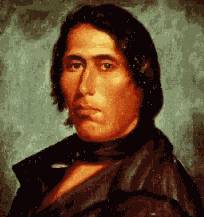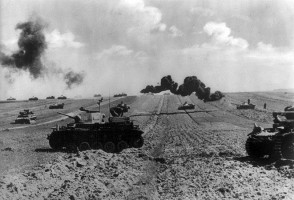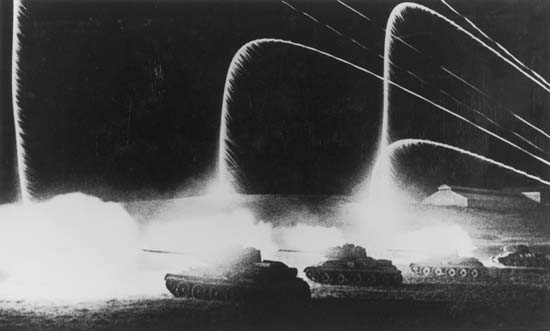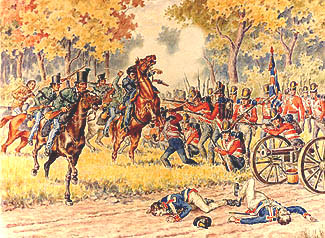Five Great Historical Battles, Part 2
August 2, 2012 in General Topics
Well, look who’s back. Obviously you didn’t get enough military history discussion in our first blog post on great historical battles, and you want Part II. Very well, my friend, I’m glad to oblige.
As a reminder, we’re focusing on battles that meet your humble author’s three criteria: historical significance, amazing combat, and epic scope.
Now reload, and let’s hit the front.
Kursk, 1943
Speaking of fronts, Hitler’s great gamble on the Eastern Front in WWII didn’t go the way he claimed it would. Envisioning a Soviet debacle-in-the-making, and selling the invasion of Russia as simply “kicking the door in”, Hitler directed vast numbers of well-trained troops — in three huge army groups — across Soviet borders in 1941. For a time, the Germans found great success.
For a time.
By 1943, everything had changed. The keystone push against the key German objective — Stalingrad (Moscow today) — had turned into a disastrous nightmare scenario. Not only was the attack foiled, but hundreds of thousands of German soldiers were killed, captured, or wounded. This signaled a turning point of not just the war on the Ostfront, but perhaps all of WWII. Desperate to regain the initiative against the Russians, Hitler ordered his commanders to target a bulge that had developed in the encroaching Soviet Lines.
The bulge, known as the Kursk salient, contained more than a million Soviets and their supporting heavy guns, armor, and other gear. Incredibly, this remote stretch of Russian pastoral steppe would become the site of the largest battle in world history. It absolutely dwarfed the Second Battle of the Ardennes in terms of men and material. Kursk would see the largest armor battle of all time — a sight that would have been awe-inspiring to this treadhead.
Hitler waited until July 5th to make his attack, a delay that allowed his greatest armored toys to be present, including the mighty-but-flawed Ferdinand tank destroyer, the legendary Panther tank, and even large numbers of the King Tiger heavy tank. Unfortunately, the delay also gave the Soviets time to prepare. Hitler’s forces faced off against dug-in, determined defenders. The Russians had even discovered the exact hour of the planned attack, and kicked off the festivities with a barrage of artillery fire ahead of the German thrust.
The ground shook with explosions and the skies roared with aircraft. Entire battalions were swallowed up in desperate combat that saw rammings, point-blank cannon fire, and near-constant air strikes and infantry skirmishes.
When the dust finally cleared, over a million men and women (the Soviets utilized female troops) were dead or wounded. But the Third Reich, who couldn’t afford its somewhat lower proportional losses, would never recover. The last, best chance for a German miracle had vanished. And with it, so did their initiative in the East. They never again launched an assault of such scale, and their forces began slowly ebbing back towards the distant Reichstag.
The Third Reich was doomed.
Battle of the Thames, 1813
Compared to the other conflicts we’ve covered, the Battle of the Thames has to seem out of place. I might even be accused of breaking my own criteria. Occuring at the tail end of the War of 1812, the clash saw barely five thousand combatants. Measured against something like the Persian forces at Salamis (see Part 1!), that’s a penance of soldiers. The casualty figures were tiny, measured in the double digits. And the location was way out on the American frontier, where William Henry Harrison (yes, that one) was attempting to recapture American interests in the Michigan-Ontario region.
So what gives?
Well, if one wants historical significance, it’s not future-president Harrison that should draw the eye. Look no further than the ranks of the Indians, where one Tecumseh leveraged his Indian Confederation against the Americans, by allying with the British.
 All the outstanding qualities of Tecumseh can be summed up in the fact that we just mentioned an “Indian Confederation”. The tribal peoples of North America had always been fiercely independent, a quality that – though admirable – worked against them when faced with an encroaching, rising power like the United States. Because of the difficulty inherent in organizing and pooling their efforts, the Indian tribes succumbed one at a time to extinction, loss of land, or assimilation into American culture.
All the outstanding qualities of Tecumseh can be summed up in the fact that we just mentioned an “Indian Confederation”. The tribal peoples of North America had always been fiercely independent, a quality that – though admirable – worked against them when faced with an encroaching, rising power like the United States. Because of the difficulty inherent in organizing and pooling their efforts, the Indian tribes succumbed one at a time to extinction, loss of land, or assimilation into American culture.
The Indians needed a Genghis Khan of their own; someone who could bring these disparate groups together and get them working against their common foe. Tecumseh, whose translated name refers to the shooting star seen the night of his birth, was a Shawnee warrior, outstanding orator, and by all accounts a tactical mastermind.
And, most importantly – he formed an Indian Confederation.
As with much of Native American history, Tecumseh’s interactions with the United States as he, his movement, and his city of Prophetstown grew are a subject of debate and conjecture. What is agreed on is that Tecumseh was a singular figure among the Shawnee, and indeed all tribal peoples on the continent. Bolstered by his brother Tenskwatawa, an inspirational prophet to the people, Tecumseh gained fame and notoriety, and native peoples flocked to his city.
When hostilities broke out, Tecumseh moved his forces through the woods like a shadow, using subterfuge and superior maneuvers to strike fast, and disappear without a trace. He was a master of deception and misdirection. In one incident, he paraded his troops in a loose circle in front of the city of Detroit, convincing the American commander that his garrison was badly outnumbered. This act led to the city’s surrender with no casualties in the attacking force – and earned Tecumseh acclaim among the British.
It all came to an end at the Battle of the Thames. The British regulars were in danger of becoming penned-in by Harrison’s mixed contingent of outnumbering militia, irregulars, and natives. Sensing trouble, they attempted to deploy their single cannon and lines of infantry to counter the American advance, but their preparations were completely inadequate, and they soon faced a full assault:
In response, the British abandoned their positions and retreated, despite Tecumseh’s pleas. Unwilling to surrender and determined to go down fighting, the Indians fought bitterly. And Tecumseh was finally killed.
Tecumseh was quite possibly the greatest strategic mastermind the Indians produced during their conflicts with the United States – and, a keen, intelligent man who knew how to leverage influence and power in order to pursue his people’s interests. The Indian Confederation fell apart after his death, and never again would such unity rise to threaten American ambitions.
One wonders what Tecumseh could have done with more warriors at his disposal. How different might North America look today?
We’ve run long today, so I’ll save the last battle for a final post. (Edit: Check out Part 3 right now!) Bookmark this blog, or follow me on twitter, and watch for the announcement soon. And while you’re at it, check out the five great stories currently available in my short fiction collection. Action and adventure fans should find a lot to love.
Stay tuned.




Recent Discussion